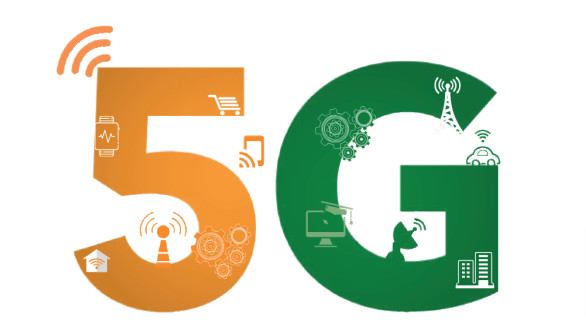
India’s mobile speeds have increased by 115%, as revealed by Ookla’s data. This improvement is largely due to the launch of 5G services, resulting in India rising 49 places in the Speedtest Global Index, from 118th in September 2022 to 69th in January 2023. The investments of both Jio and Airtel in network modernization have certainly paid off, said Ookla.
5G Boosts Digital India
Speedtest Intelligence data illustrates that India’s median download speeds have increased by 115% since 5G’s launch, rising from 13.87 Mbps in September 2022 to 29.85 Mbps in January 2023. This has pushed India up the Speedtest Global Index from 118th to 69th place, surpassing several G20 countries, as well as its neighboring countries.
India is also catching up with countries such as Turkey (30.98 Mbps median download speed/65th place on the Speedtest Global Index), South Africa (34.71 Mbps/58th place), and Brazil (35.85 Mbps/57th place).

Internet Usage in India
India is the second-largest online market worldwide, with over half a billion internet users. In 2015, the Digital India initiative was launched, which made government services digitally available to citizens and aimed to transform India into a digital society and economy.
This led to almost 270 million Indians being connected to the internet via mobile internet, thanks to the expansion of mobile broadband networks, particularly 4G. 5G is now set to play a role in furthering digital transformation across multiple sectors in India, with GSMA Intelligence predicting a $455 billion contribution to GDP by 2040.
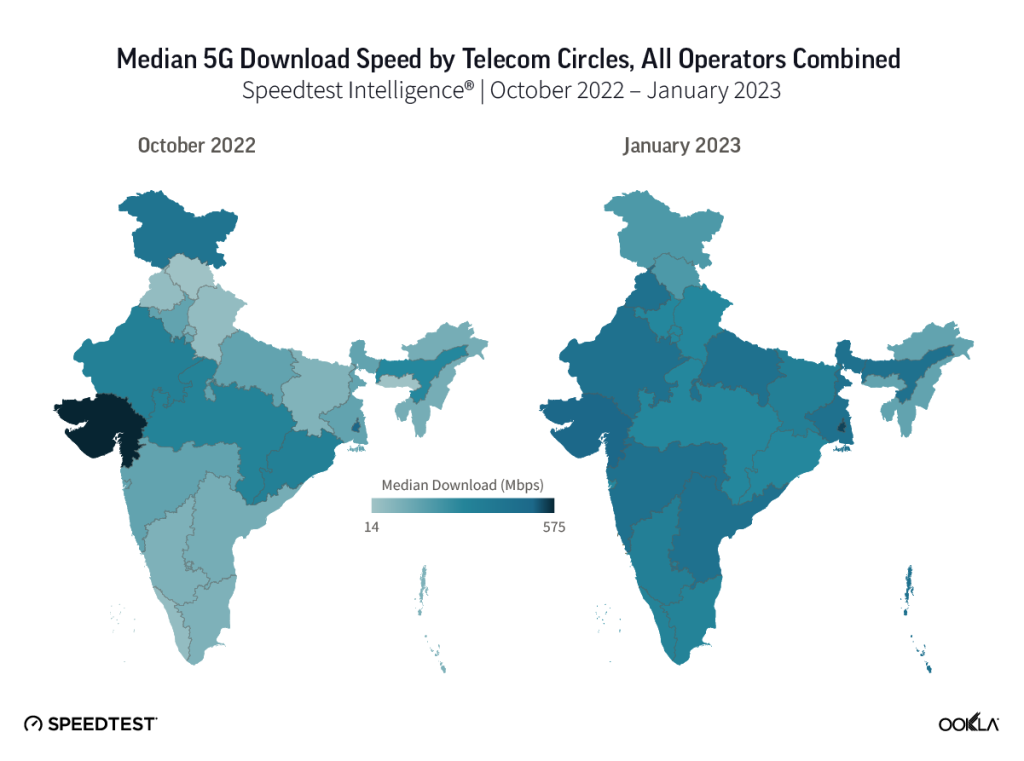
5G Download Speeds Increased
In October 2022, when 5G was first launched, the median 5G download speed was 25 times higher than 4G. In nine telecom circles, the median 5G download speed was below 100 Mbps, as networks were still in the testing stage. By January 2023, the median 5G download speed had greatly improved across all circles, with speeds surpassing 200 Mbps everywhere except Jammu and Kashmir. Kolkata even clocked speeds over 500 Mbps.
5G Investment and 4G LTE Speeds
Investment in 5G has led to an increase in 4G LTE speeds due to modernization of the underlying infrastructure. In January 2023, Ookla reported that the median 5G download speed was 25 times faster than 4G LTE (338.12 Mbps vs. 13.30 Mbps), and median 5G upload speed was 4.5 times faster (19.65 Mbps vs 3.55 Mbps).
Ookla also notes that LTE speeds may improve in many cities as 4G traffic is offloaded to the 5G network, reducing congestion on the 4G networks. However, since 5G is still in its early stages in India, its performance may decline when it is commercially available.
Jio and Airtel Expanding 5G Networks
Jio’s $25 bn investment appears to be successful, with 5G download speeds above 400 Mbps recorded in ten telecom circles in January 2023. Jio’s 5G network is Standalone (5G SA). Initial speeds varied greatly, but have stabilized over the past four months.
Airtel is deploying 5G in a Non-Standalone mode (5G NSA) and Gopal Vittal, MD & CEO of Bharti Airtel Limited, stated that between 25% to 35% of traffic is being offloaded on 5G from 4G. ARPU levels, however, remain low at Rs 193 ($2.33) for Airtel, Rs 178.2 ($2.15) for Jio, and Rs 135 ($1.63) for Vi. Airtel has removed its based Rs 99 ($1.20) plan across 17 circles, and is hoping higher-value postpaid plans will help solidify ARPU.

Understanding User Experience on 5G Networks
The median 5G performance gives us an insight into the average user experience on 5G networks, but it is not the complete story. Speedtest data shows that operators can reach maximum download speeds of up to 1.6 Gbps, which is very close to the speeds achieved by operators in the US using mmWave spectrum.
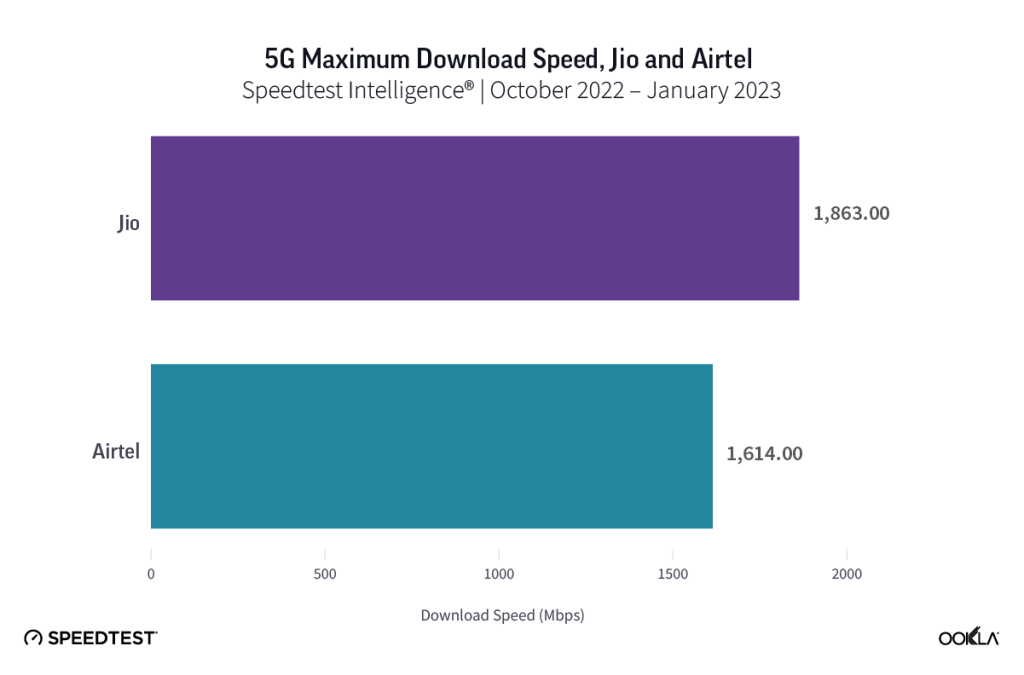
Spectrum not only factor affecting 5G performance
The relationship between low- and C-band spectrum and 5G performance is similar in India. Jio’s 5G performance differs depending on the spectrum band used; with C-band (n=78) producing a 462.60 Mbps median download speed, and the lower – 700 MHz frequency band (n=28) producing 75.70 Mbps. Airtel (also using C-band) clocks a median 5G download speed of 277.30 Mbps.
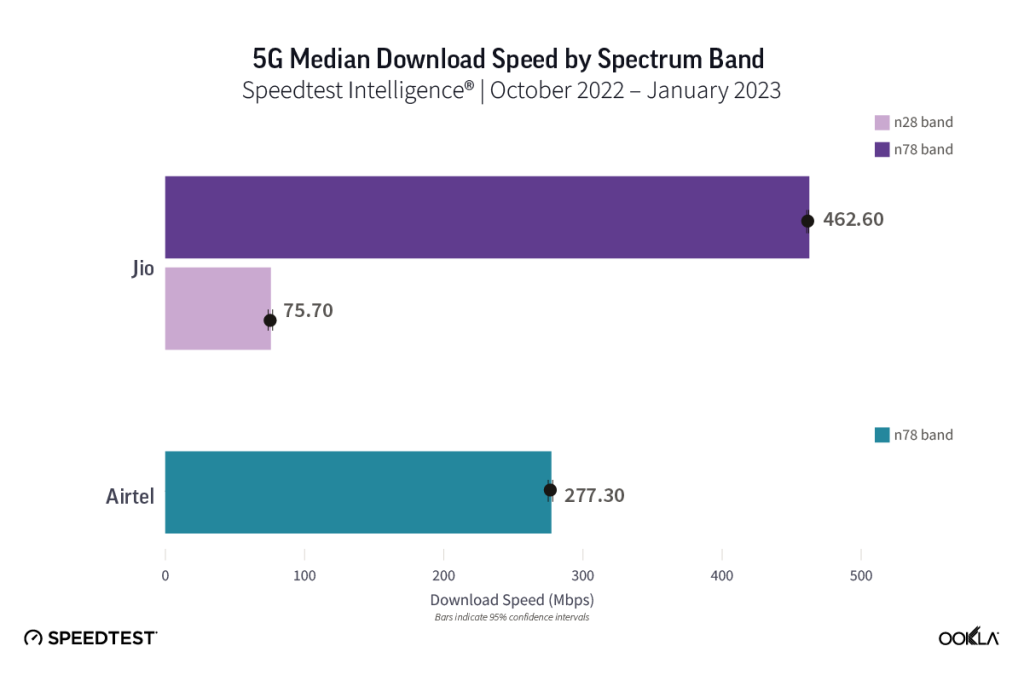
Other factors that can explain the difference in performance between the operators include the type of backhaul network they are using. Indian operators heavily rely on terrestrial wireless backhaul solutions, and only a third of mobile towers are connected with fiber. E-band spectrum helps, but is not enough to support a 5G rollout.
Airtel is using AI to understand where most of its traffic is located and plan its network rollout strategy accordingly, claims Ookla.
5G Availability in India increased 55 times
Speedtest Intelligence data shows that 5G Availability had increased 55 times between September 2022, when it stood at 0.1%, and January 2023, when it reached 5.5%. Airtel users with 5G smartphones can access Airtel 5G Plus services at no additional cost using their existing 4G SIM cards. Airtel is planning to go live in about 300 cities by March 2023 and to cover all urban areas by March 2024.
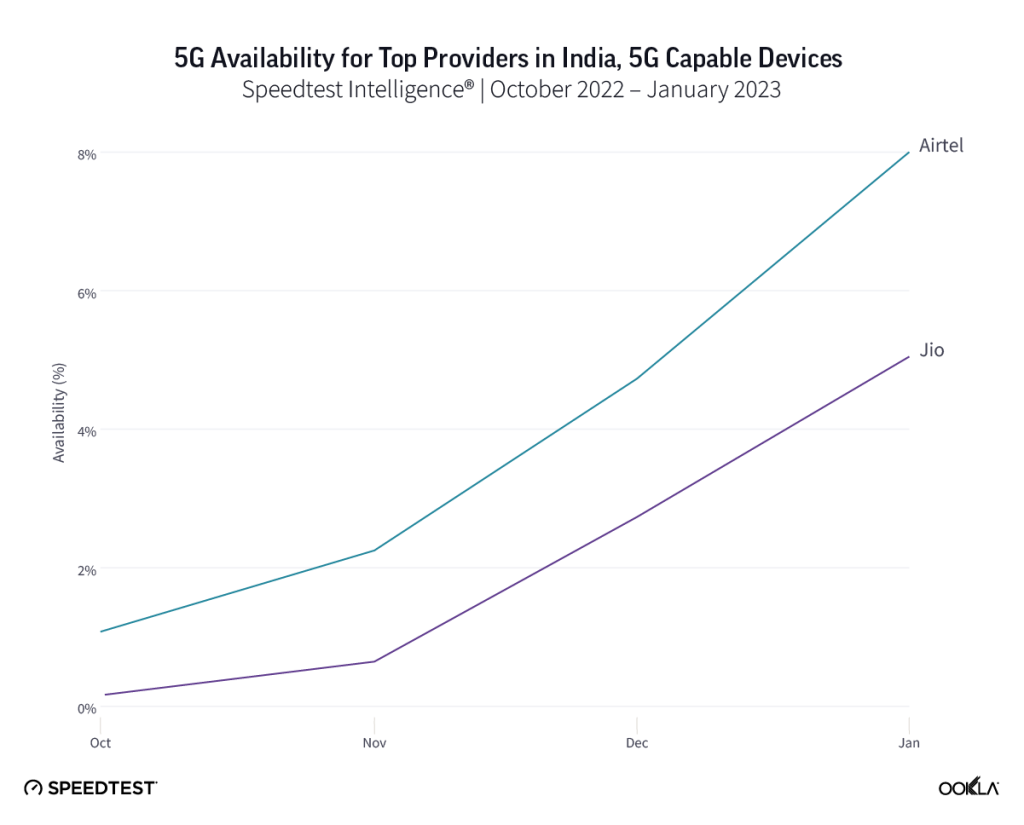
Jio also has ambitious targets for 5G network deployment, it recently stated that it is on track to complete the pan-India 5G rollout by December 2023. Jio customers can connect to 5G at no additional cost upon receiving the 5G Welcome offer, which is extended to users with 5G-enabled smartphones who subscribe to a plan of Rs239 or higher. The existing 4G SIM will also connect to the 5G network.
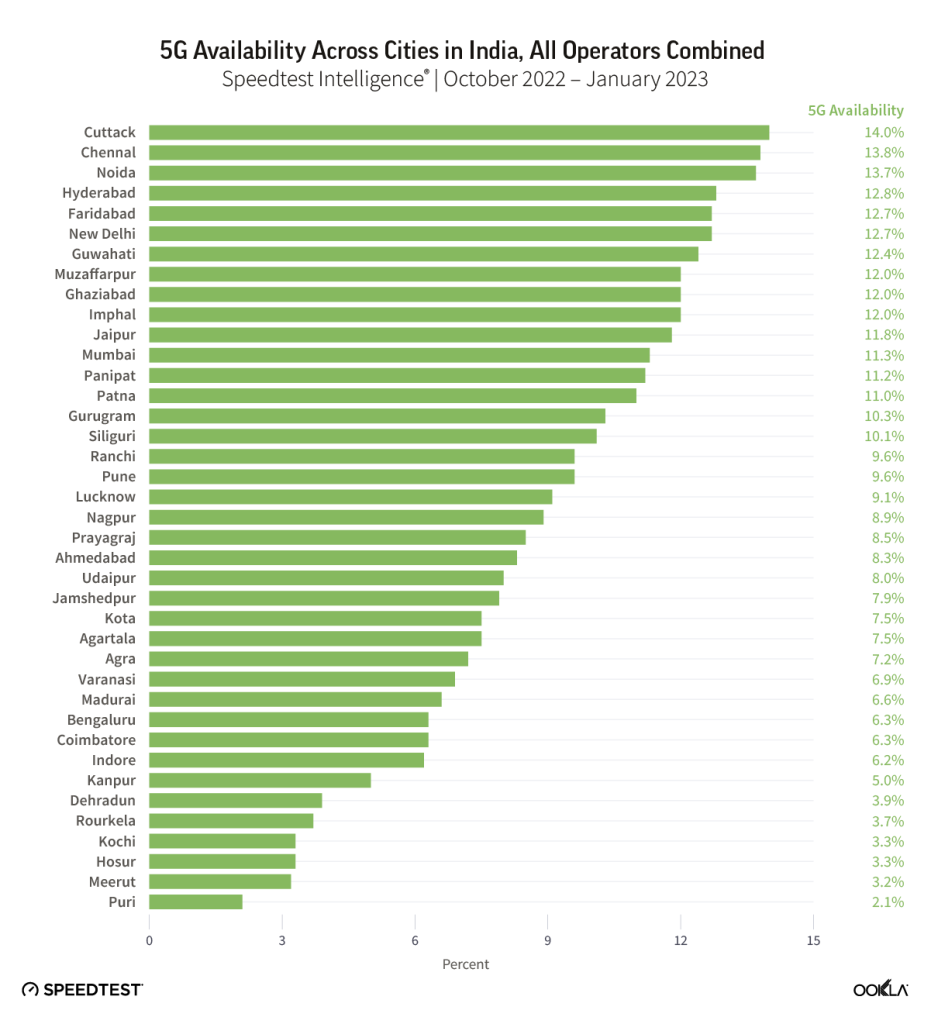
In October 2022, 5G device testing was seen in just over a dozen of cities. By January 2023, 5G Availability exceeded 2% across 39 cities, with 5G Availability above 13% in Cuttack, Chennai, and Noida.
5G Will Change the Competitive Landscape in India
Data from Ookla’s Speedtest users from January to December 2022 showed that Vi India had been losing customers and that Jio was adding new users. This was corroborated by TRAI’s data revealing that Vodafone Idea had a net loss of 2.5 million customers in December 2022, compared to Reliance Jio’s 1.7 million net adds and Bharti Airtel’s 1.5 million net adds.
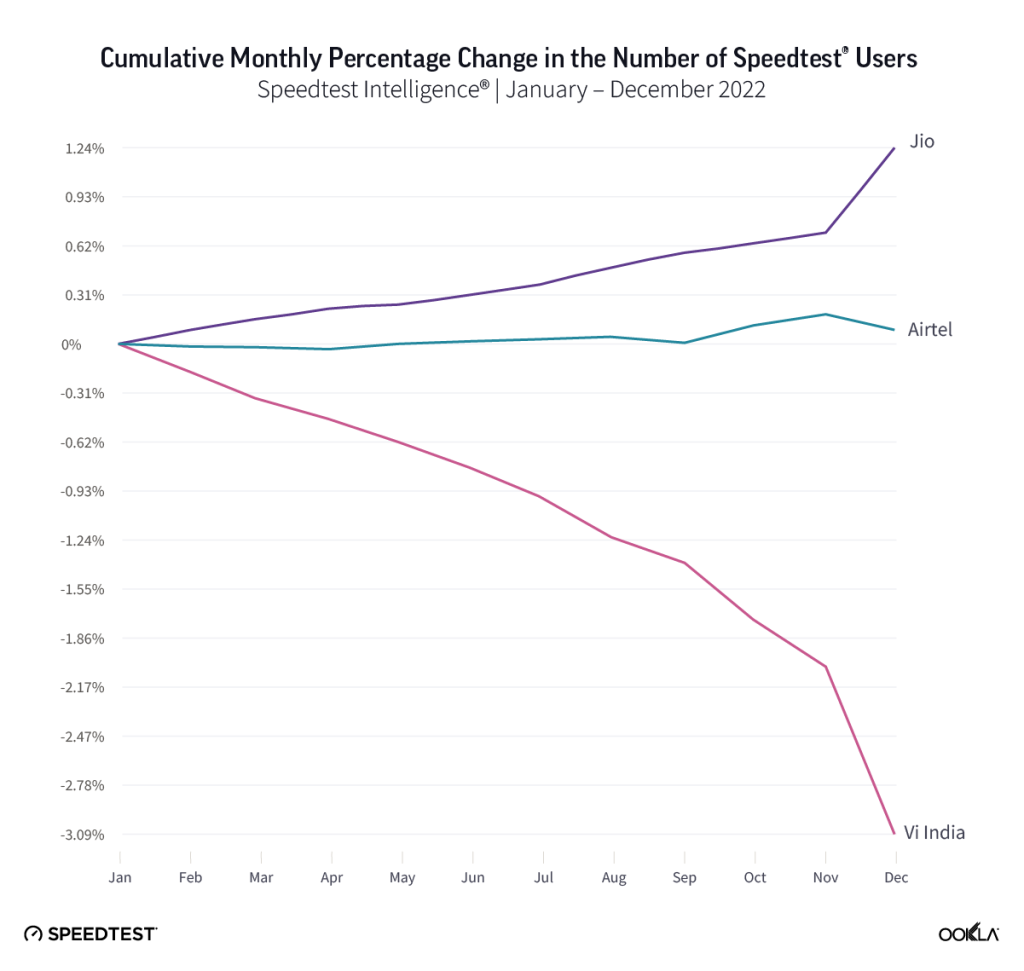
It was also found that most of Vi’s customers had moved to Jio (1.88%) and Airtel (1.32%), with Jio gaining around 1.3% of customers from Airtel & Vi India and Airtel losing 0.53% to Jio but gaining 0.63% from Vi over the same time period.
Ookla said that they will continue to monitor 5G performance in India, to see how operators scale networks, and assess the real-world performance as more consumers get online with 5G devices.
